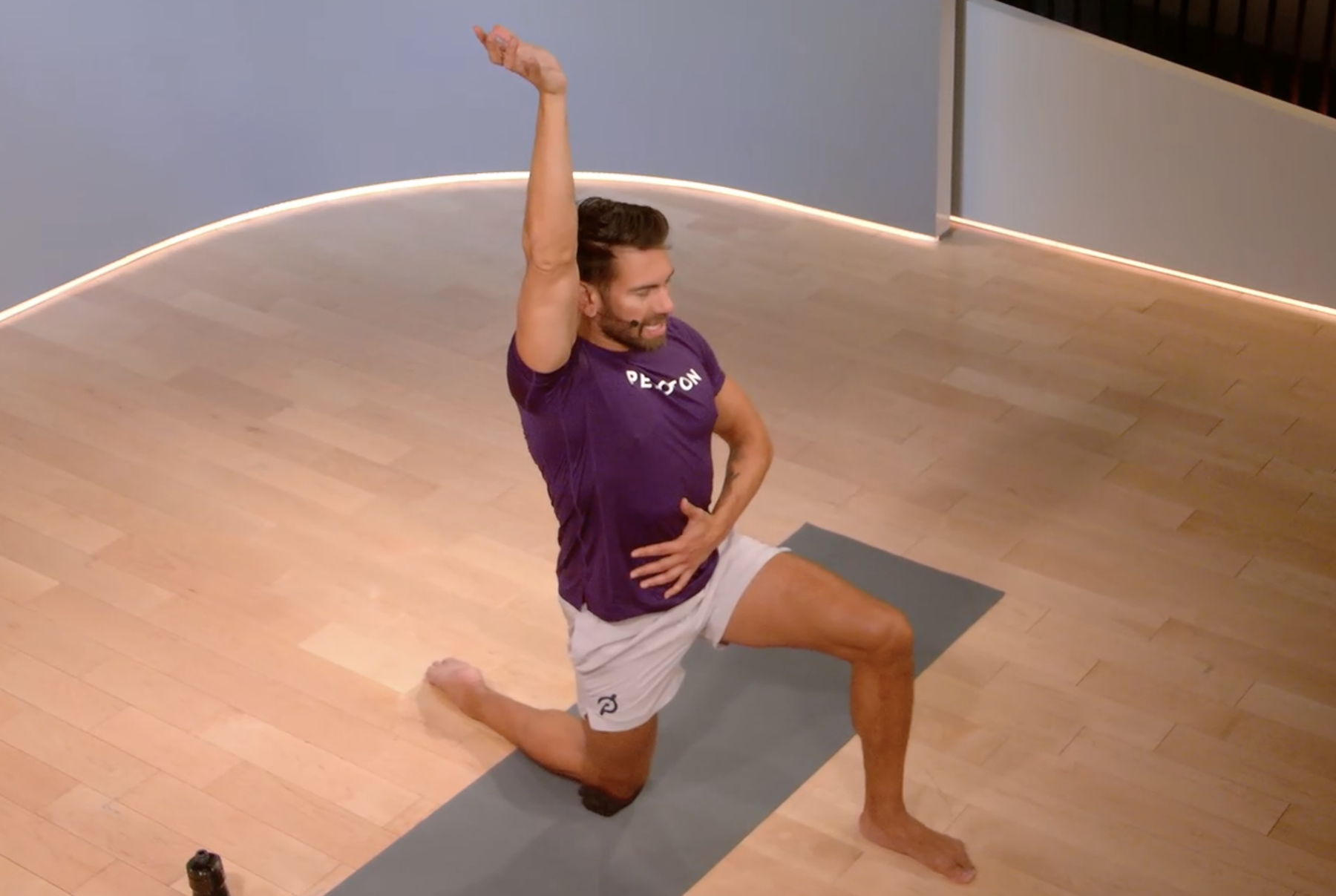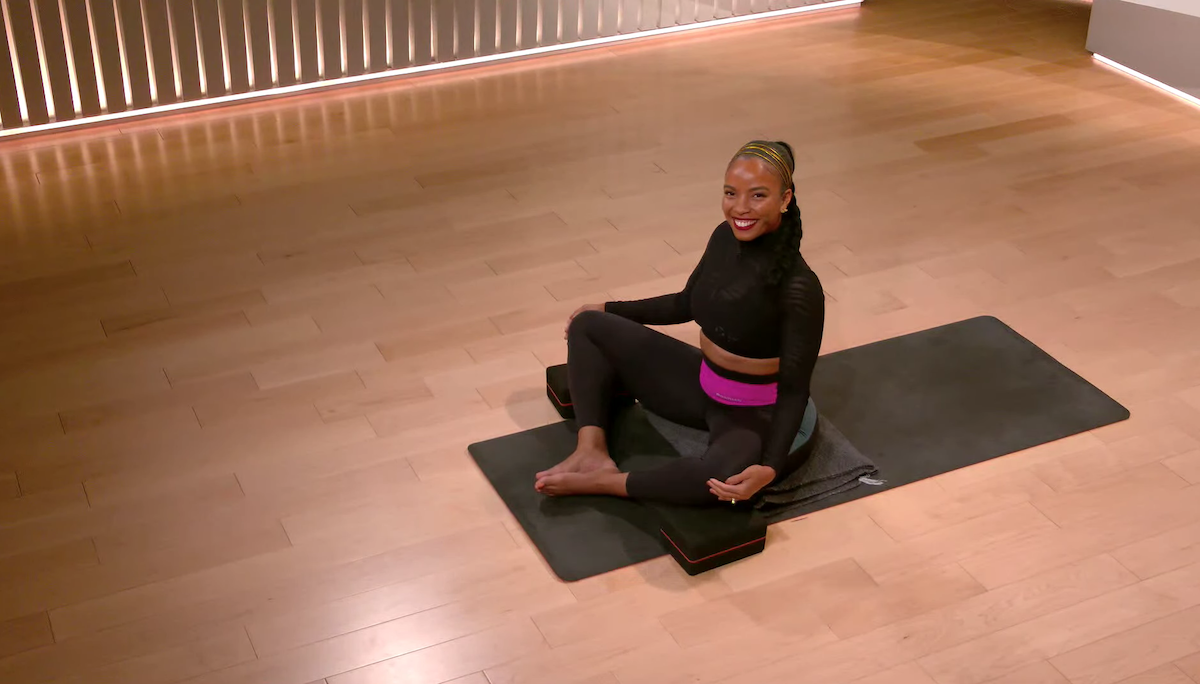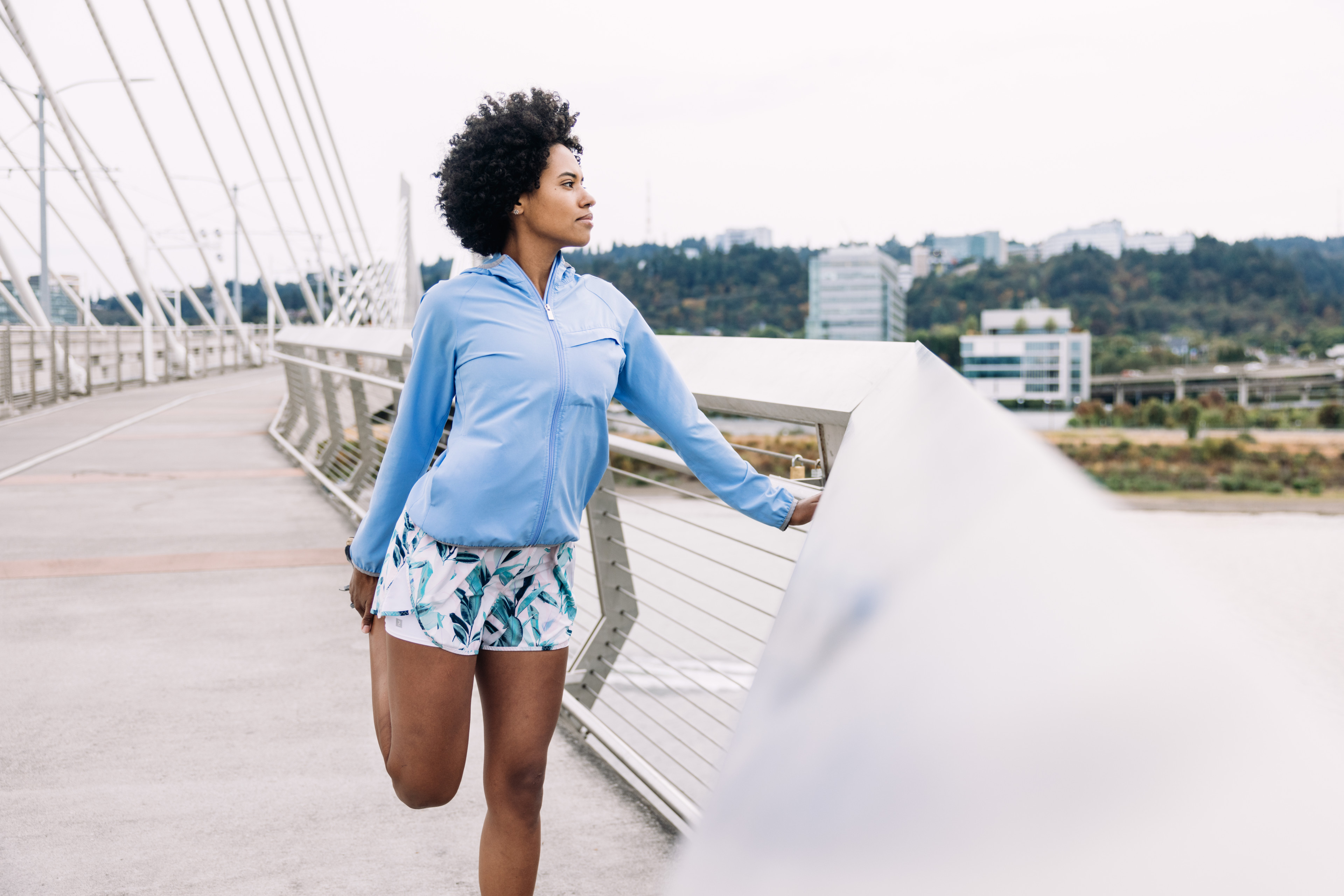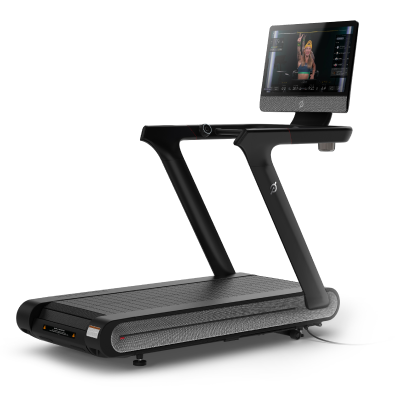
Halfpoint Images/Moment via Getty Images
8 Stretches to Do After Any Run for Better Performance
Try these post-run stretches after your next workout to keep your muscles long and limber.
By Jennifer Heimlich•
Should You Always Stretch After Running?
The Benefits of Stretching for Fitness Performance
What Types of Stretches Are Best Post-Run?
8 Post-Run Stretches to Try
Takeaway
When you finish a run, it can be tempting to just rip off your sweaty clothes and hop right in the shower. But many run coaches will tell you there’s one thing you should do first: some post-run stretches.
“I have definitely been guilty of neglecting my post-run stretching in the past,” admits Peloton instructor Jon Hosking. But he learned that skipping this step left his body feeling extra tense and sore afterward. “Now, taking the time to stretch after a run is a real necessity,” he says. He knows he particularly needs to give his tight calves some love after a run, or he’ll end up regretting it the next day.
But should everyone stretch after a run? And what stretches should runners do? Read on to learn what the latest research says about post-run stretches and what you should keep in mind if you think your body would benefit from doing some stretches after running.
Should You Always Stretch After Running?
Science doesn’t have a clear-cut answer about whether you should always stretch after every run. “The deeper you dig into the research, the more complicated it gets because there's conflicting views on the benefits of stretching,” says Bryant University clinical associate professor of biological and biomedical sciences and physical therapist Jennifer Hurrell. A major meta-analysis and systematic review published in 2021 found that stretching after any kind of exercise isn’t any better than just passive recovery (read: doing nothing) when it comes to reducing soreness or recovering strength after a workout.
“It's really kind of contrary to the common belief of what we should be doing with stretching after activity,” Hurrell says. “But it's not to say that stretching isn't good.”
If you have a muscle that’s overly short, stretching becomes absolutely essential to regain your natural range of motion so that a lack of length doesn’t throw off your running form. There’s also something to be said for maintaining your flexibility so that you don’t have to put in overtime in order to gain it back. That’s why the American College of Sports Medicine recommends stretching at least two to three times a week, if not daily. “What that's going to do is bring our muscles through their full excursion so that over time, that muscle does not start to adaptively shorten,” Hurrell says.
The Benefits of Stretching for Fitness Performance
Less flexible runners stand to benefit the most from post-run stretches: If you’ve got an overly short muscle, stretching it could help get you the length you need to run (and walk, and live your daily life) with better biomechanics.
As Hurrell points out, if you’ve got shortened hamstrings, for instance, you’re going to end up with a shorter stride when you’re running because your legs won’t be able to extend as far as they should during your gait cycle. “And a reduced stride length is going to ultimately result in decreased speed and decreased distance covered over time,” she says. That’s obviously not ideal. But it means there’s room for improvement: Stretching that muscle so that it can reach a longer stride could help you run farther faster.
You could also get hurt if you don’t maintain enough length in the muscles. “A muscle that's shorter than it should be does not allow a joint to function normally from a biomechanical standpoint, and that can set us up for injury,” Hurrell says.
Taking the time to do some post-run stretches can help keep your body healthy so you can keep running as efficiently and for as long as you want to. As Jon says, “It’s hugely beneficial, allowing you to maintain and adhere to a running program while adding longevity.”
What Types of Stretches Are Best Post-Run?
Not all stretches have the same effect. There are dynamic stretches that keep you moving as you open up the muscles and get your blood flowing, making them a great part of pre-workout warmup. There are mobility moves which focus on expanding your range of motion in the joint. And then there are static stretches which have you hold a position for several seconds at a time to maintain or increase the length of a muscle.
Post-run (or any other workout) is when you want to hold those long stretches. “After a run, your muscles are at their warmest and most supple, so it's the perfect time to partake in some static stretching to improve their flexibility,” Jon says.
You never want a stretch to be painful, but you do want to hang out in the position for a while. Hurrell says that to make true permanent change in the length of a muscle, you’ll want to hold a stretch for at least two minutes. “Anything under 60 seconds, it's going to bounce right back to the original length that it was to begin with,” she says. On the other hand, if you’re just looking to maintain your flexibility, 10 to 30 seconds should do the trick for most adults (though closer to 60 seconds might be beneficial if you’re older).
8 Post-Run Stretches to Try
The best muscles to focus on when you’re doing stretches after running are the ones most likely to be shortened on runners. Hurrell says that in her experience, that’s most commonly the hip flexors and hamstrings, followed by the quads and calf muscles. Here are some of the top recommendations that Jon includes in his Post-Run Stretch Class, and that Hurrell recommends as well.

Antonio_Diaz/iStock/Getty Images Plus via Getty Images
Toe Touch
This classic gym class stretch is a great way to target not only the hamstrings, but also your back. “That also creates a flexion motion of your spine, which can be good for you,” Hurrell says.
Stand with your feet hips-width apart, arms resting by your sides, with your knees just a little soft (rather than locked).
Bend at the hips to lean over and reach your hands toward your toes. Stop once you feel a stretch in the hamstrings. If you need to bend your knees, that’s all right—you’ll still target the hamstrings.
Supine Hamstring Stretch
This version of a hamstring stretch keeps your back out of the equation to really zero in on the backs of your thighs.
Lie flat on your back with your knees bent and feet flat on the floor.
Lift your right leg up straight toward the ceiling, and grab the back of your thigh or calf with both hands. If you can’t quite reach, you can wrap a towel around the leg instead. Or you can keep the knee slightly bent.
Gently pull the leg toward your torso while keeping your hips and lower back flat on the floor.
Return to the start, and switch sides.
Calf Stretch
Our calf muscles put in a lot of work while we run, so it’s smart to make sure yours stay pliable with this classic calf stretch.
Stand about a foot away from your wall with your feet parallel, and place your hands on the wall at about shoulder height (for leverage).
Step the right leg back about another 12 inches, placing the foot flat on the ground.
Bend the left knee and bring your hips forward toward the wall until you feel a stretch in that back calf.
Return to start, and switch sides.

This one will target your hips and glutes in a more gentle way than a Pigeon Pose.
Lie on your back with your knees bent and feet on the floor.
Bring your right foot over your left knee, and let that right knee point out to the side.
Lift your left leg up off the ground, grabbing behind the thigh to bring it closer toward your torso until you feel a stretch in the hips.

Lunging Hip Flexor Stretch
A forward lunge can be a great way to target the small hip flexor muscles. “When we lunge forward, the rear leg is undergoing a hip flexor stretch, particularly when the abdominals are contracting at the same time,” Hurrell says.
From a neutral standing position, step the right foot forward into a lunge, landing on a bent right knee with your left leg straight behind you.
Contract your abs, making sure not to extend your lower back so you really feel the stretch isolated to the left hip flexor.
Return to the start, and switch legs.

Butterfly Stretch
If your inner thighs and groin area are aching, try this move.
Sit down on the floor with your legs bent and feet together, letting your knees fall out toward either side.
Hold your ankles in both hands, and bring your torso forward toward your feet as you press your knees to the floor until you feel a stretch in the inner thighs.

Downward Dog
Slipping into this yoga pose post-run can open up the back of your body, including your calves, hamstrings, and lower back.
Start in a tabletop position on hands and knees.
Straighten your legs as you lift your hips up to the ceiling until you create an inverted V-shape with your arms and legs. Your feet should be hips-width apart.
Push your torso toward your thighs. If your hamstrings are tight, you can keep the knees slightly bent.

RyanJLane/E+ via Getty Images
Standing Quad Stretch
Most of us use our quads big time when we run, so stretch them out after with this simple move.
Stand with your feet parallel, hips-width apart.
Bring your right foot toward your glutes, grabbing it with the right hand. You can put your left hand out to the side for balance, or use it to hold onto something stable.
Use the right hand to pull that foot in toward your glutes, keeping the thighs together, hips square, and torso tall.
Return to the start, and switch sides.
Takeaway
So what does an ideal stretching and running routine look like? “Before a run I will spend time foam rolling and mobilizing muscles and joints, and then save static stretching for when I have finished my session,” Jon says. Doing those kinds of stretches after running can open up the muscles over time so they don’t hold you back from putting in your best performances.
Sure, post-run stretches might not give you all the recovery benefits you’ve been promised. But they can help you maintain and gain the kind of length in the muscles that you need to hit new PRs—and just feel better in your day-to-day life.

Peloton App
Access thousands of classes with no equipment needed.
This content is for informational and educational purposes only and does not constitute individualized advice. It is not intended to replace professional medical evaluation, diagnosis, or treatment. Seek the advice of your physician for questions you may have regarding your health or a medical condition. If you are having a medical emergency, call your physician or 911 immediately.
Explore Peloton Treads
Level up your inbox.
Subscribe for a weekly dose of fitness, plus the latest promos, launches, and events.
By providing your email address, you agree to receive marketing communications from Peloton.
For more about how we use your information, see our Privacy Policy.











